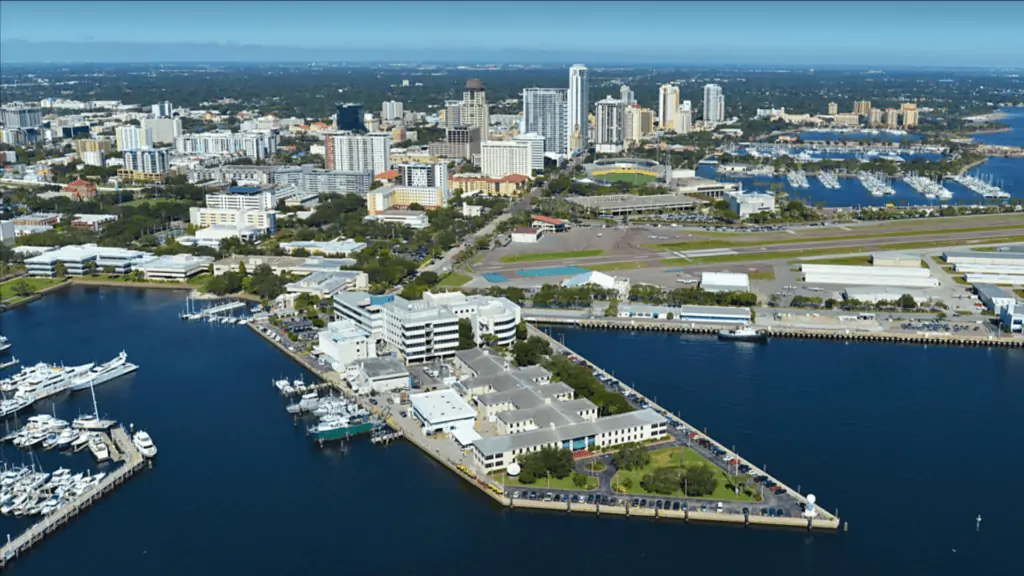In a collaboration, the University of South Florida and the burgeoning St. Petersburg Innovation District are pursuing a grant from the National Science Foundation that would funnel $160 million into marine science innovation in the city. A presentation at a recent Chamber of Commerce meeting outlined the benefits of the grant and what it would do for St. Pete.
Already, Tampa Bay has the southeast’s largest marine science community, driven largely by the enclave in St. Pete surrounding Bayboro Harbor and the Port of St. Petersburg. As such, USF and the Innovation District believe the city is in prime position to be a global leader within the Ocean Economy.
ADVERTISEMENT
The purpose of the NSF grant is to create a regional “Innovation Engine,” which would serve several needs in St. Pete. Areas of focus for the proposed St. Pete Innovation Engine include coastal infrastructure resilience, economical approaches to sustaining natural resources and ocean life, and the development of renewable energy from the ocean. Many of these things are already happening now inside the Innovation District, and the grant would provide more resources to expand that research and lead the transition of innovation into practice.
St. Pete is a regional hub for marine science
Of course, the effects of this potential Innovation Engine would be felt throughout the city. The Ocean Economy – or Blue Economy – is one of the fastest growing sectors across the globe, expected to double to $3 trillion by 2030, as the presentation noted. As pointed out, 80% of all goods traded internationally are shipped across oceans, and 1 in 10 livelihoods across the globe depend on fisheries. Becoming a leader in this field would certainly be a boon for St. Pete’s local economy and bring more jobs to the city.
While there are plenty of marine-relevant institutions spread throughout the Tampa Bay area, the Innovation District in particular is home to an astounding collection. Already, NOAA, the U.S. Coast Guard, the Florida Institute of Oceanography, the USF College of Marine Science, the Fish and Wildlife Research Institute, the U.S. Geological Survey, and the Maritime and Defense Technology HUB are located within the community. Soon, it will also be home to the ARK Innovation Center and the USF Center of Excellence in Environmental and Oceanographic Sciences.
ADVERTISEMENT
The potential value of this grant is $160 million over 10 years, and the NSF’s stated purpose of the grant aligns well with what is already happening at USF and in the Innovation District. The aim is to “catalyze and foster innovation ecosystems across the U.S.,” in order to “advance critical technologies; address national and societal challenges; foster partnerships across industry, academia, government, nonprofits, civil society, and communities of practice; promote and stimulate economic growth and job creation; and spur regional innovation and talent.”
The deadline for grant proposals is January 18. Learn more about the Innovation District here.
ADVERTISEMENT
























